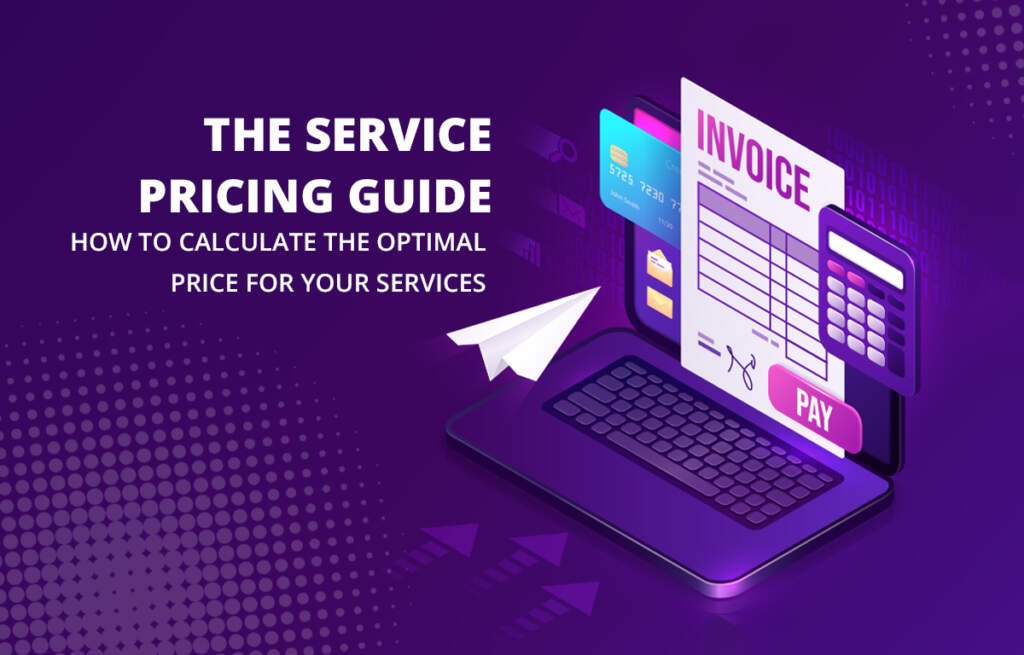Freelance freedom is waiting for you. Learn how to start out, get more jobs, earn more money, and build a successful freelance business on Upwork with these helpful tips.
Read More »

In the post-COVID era, the world is shifting towards the gig economy as more and more people want to work on their own terms, build their own businesses, and, most importantly, be their own boss. While there are several challenges freelancers or gig workers face when starting out, one of the most crucial obstacles is determining their pricing.
Well, if you have all these questions and more, you’ve arrived at the right place. In this article, we take you through the steps to help you set a price for your services. Without further ado, let’s get right to it.
Even if you’re in the service industry, you do incur several costs. Whether you’re a copywriter, a graphic designer, a software developer, an AI engineer, or anything else, you will have expenses while providing the respective service. These include internet cost, cost of subscription for different tools, cost of office rent (if any), website hosting (if you own a website), and more. Ensure you account for the most minute expenses and arrive at the final sum. Once you do this, you’ll realize how much money you need to make to break even.
One of the most common pieces of advice you would have received is finding out the industry standards. But how do you go about it?
Step 1: Research online. Google the pricing based on your field and your service. This is because the pricing and the industry play a huge role in the pricing you can set. You can go to public forums where such discussions take place or even learn from freelance portals such as UpWork and Fiverr.com.
Step 2: Look for surveys and reports from reliable sources. Any industry will have reports about its growth/decline, the trends observed in the past year, and what the future looks like. Find out such portals for your field and services, and learn about the pricing set by freelancers who provide the same service as you.
Step 3: Start networking with people in your industry and your competitors. Find out how much they charge. While some might not reveal their exact charges, other freelancers tend to put out their pricing models for others’ benefit. So learn how much they price, what services they provide for the price, and also find out how they go about explaining the pricing to the clients.
With these three steps, you can get some idea of what kind of services you’ll provide. Furthermore, you’ll also know how to price your services.
This is a crucial step to determine your pricing.
The answer to these questions can either make you another brick in the wall or set you apart from your competitors. Companies tend to look for freelancers who come with a holistic perspective. It makes them more clear about the service they provide, the goals it should accomplish, and how it should impact other parts of the client’s business. While this is just one quality, there are several other valuable qualities that you bring to the table. Take those into account while determining your pricing.
Now, there are different pricing models you can adopt for your business. This depends on the kind of work you get, the hours you’ll spend on it, the complexity of the work, and the turnaround time you have to complete the gig.
You can always price on an hourly basis. Use tools such as Upwork to keep track of time and know how much time you spent doing the project. Although hourly pricing is recommended for beginners, it is slowly becoming outdated for multiple reasons.
Here you share the complete scope of work you’ll do, and based on the expertise and the experience you provide to the client, you must set the pricing. Furthermore, here you will be able to get advance payments in a model where you get 50% in advance, 25% before the final delivery, and 25% after the final delivery. The advance payment percentage is subject to change and will likely differ from client to client based on multiple factors. So, keep this part flexible.
For projects which are always-on or go month-on-month, you can charge differently. Here, you charge slightly low because you’re getting stable work from the client. But, you must set the expectation after a specific period. Your charges could increase after the first six months or annually.
These are the three models you can follow, but also keep them flexible as client-to-client expectations and interactions would differ. So, a simple and straightforward formula you can use to get started it
Pricing = (Sum of All Costs) x (Margin that You Want to Earn + 1)
For instance, if you’re a writer and your costs include electricity bills, subscription to tools, and more, you add them and multiply it by a number which is
You must have heard phrases such as competitive pricing, but what does it mean? The idea is to not keep the pricing too high or low compared to your peers or industry standards. If it’s too high, people might feel it’s over the top, and if you price too low, people might not expect good quality work from you. Hence keeping competitive pricing for your projects is necessary.
Although the pricing needs to be competitive, know that you must be profitable. Regarding profitability, you must start by ensuring that all your needs, wants, and savings are handled. Once these are sorted, you must charge enough to grow your business.
Communicating pricing to clients is one of the biggest challenges for any service provider, whether a beginner or a veteran. Although it gets easier with time, you must hone how to communicate pricing to your customers.
First, establish authenticity and ingenuity with the client. This is by being transparent and offering realistic deliverables. Once they know you’re genuine, you can showcase the values you will provide to the client and how that sets you apart from your competitors. Finally, the most important thing you need to do is negotiate well. There’s no rule book that can teach you how to negotiate, as each scenario is distinct and unique. So, always go in with a flexible mindset and do what works best for you and the client.
Overall, these are the various steps for setting a price as a freelancer. In summary, you must remember the following things:

With 20+ years in eCommerce and a proven history of scaling a 7-figure business, I know how to transform challenges into opportunities for growth. As the former Head of E-commerce for a European food tech company, I managed 14 e-shops across Europe and South Africa. Now, I specialise in helping professionals like you unlock the potential of AI automation for your business.
Over 1,800 students have already enrolled in my online courses to master these skills. Whether you’re looking for hands-on AI automation services or want to upskill with my courses, I’m here to help. Connect with me on LinkedIn to discuss your needs or join my programs to start building smarter, more scalable systems today!
Freelance freedom is waiting for you. Learn how to start out, get more jobs, earn more money, and build a successful freelance business on Upwork with these helpful tips.
Learn the Fiverr Formula, a helpful guide with tips and tricks to creating a winning Fiverr profile and starting your journey to earning a living online.